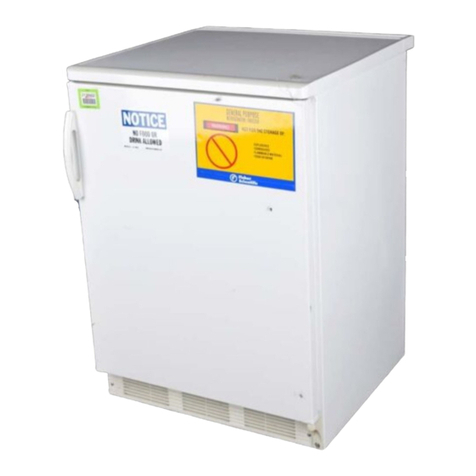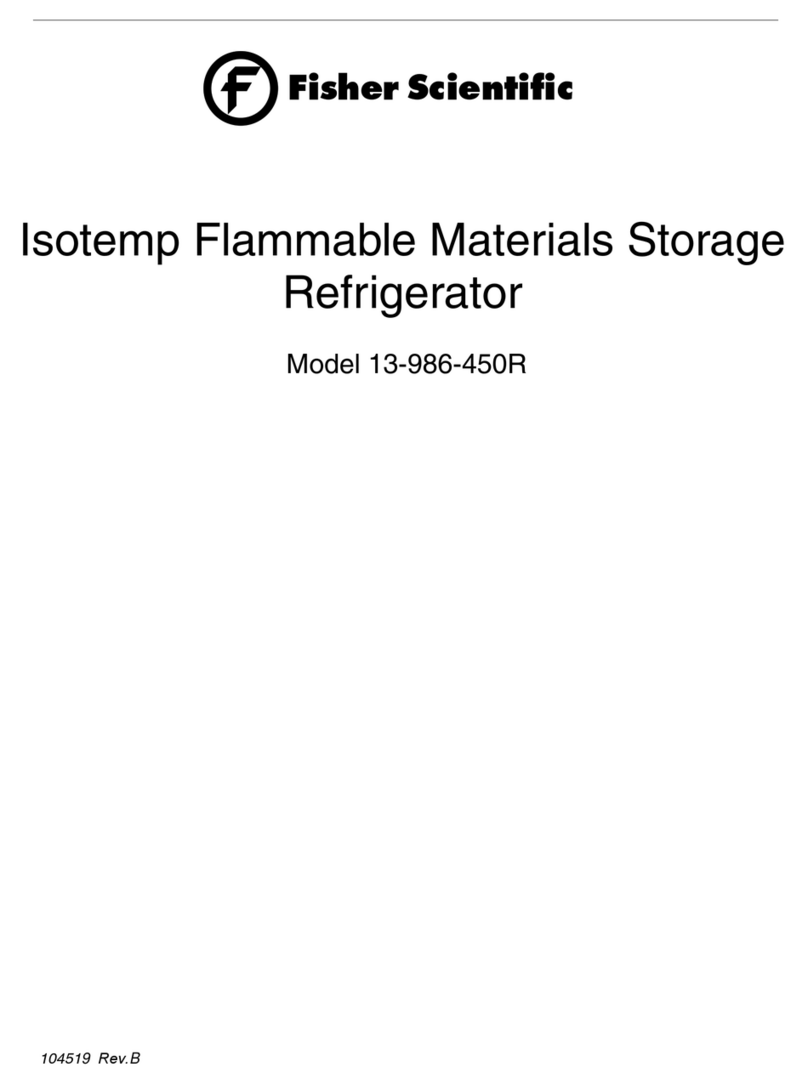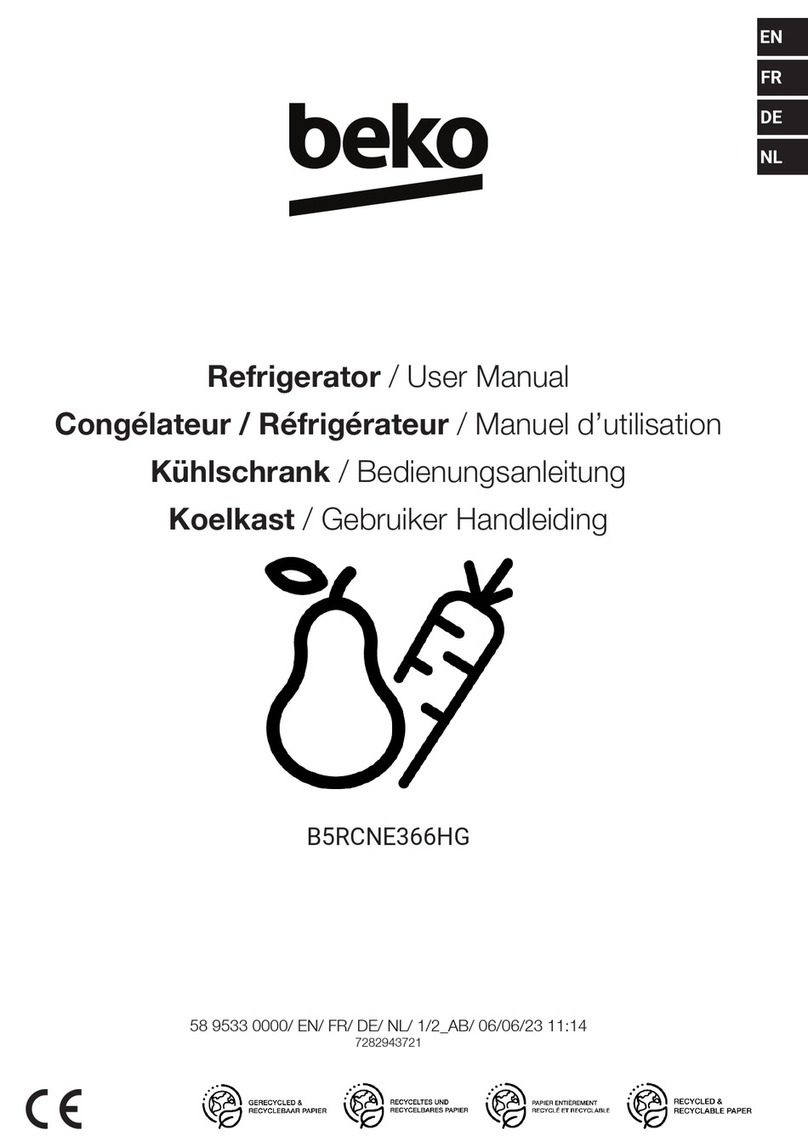5
Selecting a Location
Choose a location for the refrigerator that will provide at
least three inches of clearance between the cabinet and
any adjacent vertical surface at the sides and four inches
at the rear. Four inches of clearance is required above the
top. Appropriate electrical power must be available. Attach
the refrigerator to the facility’s electrical supply as directed
by the National Electrical Code Article 440.
Leveling the Unit
This refrigerator must be level in order to provide ade-
quate condensate drainage as well as proper door align-
ment and operation. The refrigerator should be in its final
operating location and set so that it is firmly positioned on
the floor.
After discarding crating screws and wood base, level the
freezer side to side and front to back by adjusting the
supplied leveling feet (Part Number - SPN 105192). The
leveling feet can be adjusted so the front of the unit is
slightly higher than the rear – this will allow the door to
close easily if it is left halfway open.
Shelves
Shipped inside each cabinet are four fixed shelves which
also serve as part of the evaporator coil.
Electrical Connection
Determine the total amount of current presently being
used by other apparatus connected to the circuit that will
be used by this refrigerator. It is critical that this added
current demand and other equipment on this circuit not
exceed the rating of the fuse or circuit breaker in use.
The frequency and nominal voltage requirements for the
unit are specified on the data plate, which is located on
the door’s exterior. Only supply this unit with an electrical
source that meets these requirements. Low line voltage is
often the cause of service complaints. With the unit run-
ning, check that the line voltage is within ±10% of that
specified on the data plate.
Installation
Caution
Be sure the voltage supplied to the
refrigerator/freezer is equal to that
specified on the data plate.
Warning
For personal safety, this unit must be
properly grounded before use.
Caution
DO NOTunder any circumstances,
attach a line cord to this unit. This
refrigeration equipment is intended for
a hard-wire connection to the facility
power supply.




































